What is basin click waste?
A basin click waste, also known as a pop-up waste. This type of stopper is operated by pressing down on the plug to close the drain and pressing it again to release the water. The click waste usually has a lever at the back of the tap. This lever is connected to the plug. When you push the lever down, the plug moves downwards.
Moreover, the water is stopped from flowing out. Click wastes are easy to use. Yet, they are popular in modern bathroom designs.

What is flip waste?
Flip top waste is a stopper that flips a lever up or down to close or open the drain. Unlike click wastes, flip wastes do not have a lever at the back of the tap. Instead, they have a lever on the side of the waste. When you flip the lever up, the plug moves upwards. Flip wastes are typically found in older bathroom designs.

Why do we need flip waste for the basin?
Flip waste is a type of waste system used in a basin or sink. It has a flip-top design that allows easy opening and closing of the waste, making it convenient and user-friendly. Here are some reasons why we require flip waste for a basin:
- Convenience: the flip-top design of the flip waste allows for easy opening and closing of the trash, making it more convenient to use than traditional screw-type wastes.
- Hygiene: the flip-top design also helps to prevent contact with waste, which can help maintain good hygiene in the bathroom or kitchen.
- Aesthetics: flip wastes are available in various designs and finishes, which can enhance the overall aesthetics of the basin or sink.
- Water-saving: some flip waste models have a built-in water-saving feature that can help conserve water by controlling water flow through the waste.
Basin click waste and flip waste: how do these control water flow?
Basin click waste:
A basin click waste has a button or lever mechanism that clicks into place to open and close the waste. This mechanism is located near the basin or sinks at the top of the trash. When pressed, the lever lifts a plug inside the debris to allow water to flow out. Pressing it again will close the plug to stop the water flow. Basin click wastes are typically made of brass or plastic. Moreover, it comes in many finishes and colors.
Flip waste: flip waste has a small lever or paddle located at the bottom of the waste, underneath the basin or sink. When the lever is flipped up, it opens the waste and allows water to flow out. When the lever is flipped down, it closes the waste and stops the water flow. Flip wastes are typically made of brass, stainless steel, or plastic and come in various colors and finishes.

Basin click waste vs. Flip waste: working
The working mechanism of flip waste

Flip waste is a type of drain stopper used in bathroom basins. The working mechanism of a flip waste is relatively simple.
A flip waste consists of a plug attached to a metal rod. Yet the lever is located on the side of the waste itself. Flipping the lever up causes the rod to move the plug up and close the drain. It prevents water from flowing out of the basin. To release the water, you flip the lever back down. This would cause the rod to move the plug down and allow water to flow out of the basin.
The metal rod is connected to the lever through a series of mechanical linkages. This lever allows the flip waste to be operated quickly and smoothly. The lever itself is designed to be ergonomically friendly, with a comfortable grip and easy operation.
Flip waste is a simple and reliable mechanism for controlling water flow in a bathroom basin. Yet, it is often preferred for its ease of use and low maintenance requirements.

The working mechanism of basin clicks waste.
The working mechanism of a basin click waste is slightly more complex than a flip waste but still relatively simple. It consists of a plug attached to a metal rod and a lever at the back of the tap. Pushing the lever down causes the rod to move the plug up and close the drain. It prevents water from flowing out of the basin. To release the water, you push the lever up again, causing the rod to move the plug down.
The lever at the back of the tap is connected to the metal rod through a series of mechanical linkages, which translate the movement of the lever into the direction of the plug. The click mechanism itself is usually located within the waste itself. It consists of a series of spring-loaded pins or balls that engage with the metal rod moving up and down, providing an audible “click”, indicating the plug is locked.
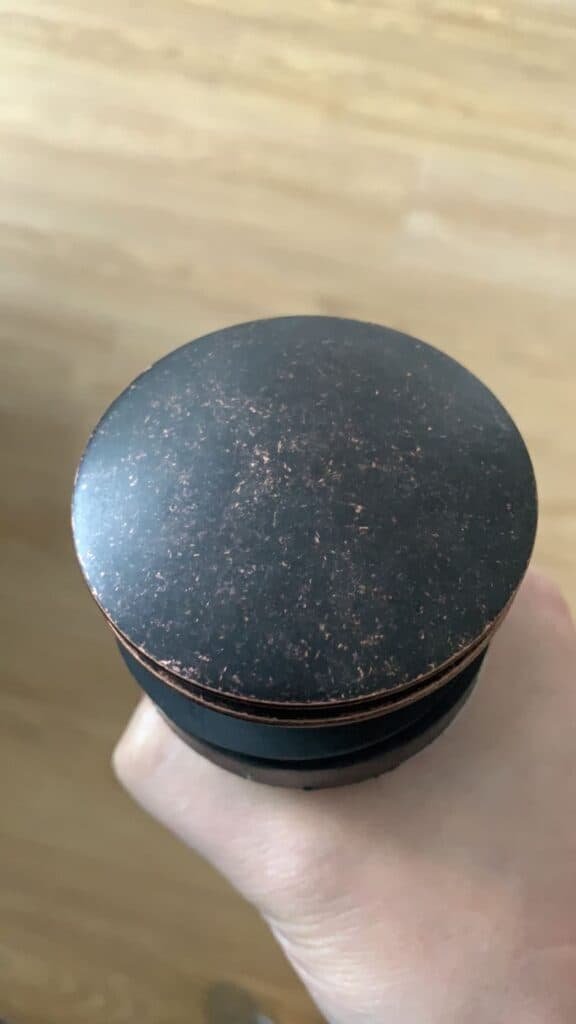
Types of basin click waste
There are several types of basin click wastes available in the market, and they can be broadly classified into two main categories based on their design and installation method:
- Integrated basin click waste: this type of click waste is integrated into the basin and installed during manufacturing. It is a popular choice for modern bathroom designs. It is typically made from high-quality materials such as brass, chrome, or stainless steel.
- Retro-fitretro-fit basin click waste:
- This type of click waste is designed to be installed on an existing basin. It can be retro-fitted onto most standard bathroom basins. Retro-fit retro-fit click wastes typically consist of a top section, which is installed onto the basin, and a bottom section, which is inserted into the waste pipe below. They are available in various materials and finishes, including plastic, brass, and chrome.
Apart from these two main categories, there are also several different types of click wastes based on their functionality and design, including:
- Standard click waste: this is the most common type of click waste. It is operated by pressing down on the plug to close the drain and pressing it again to release the water.
- Pop-up click waste: this type of click waste is similar to the standard click waste but features a giant plug that pops up when the lever is lifted, allowing for easier drain cleaning.
- Slotted click waste: this type of click waste is designed for use with overflow basins and features a slotted plug that allows water to flow through the overflow channel.
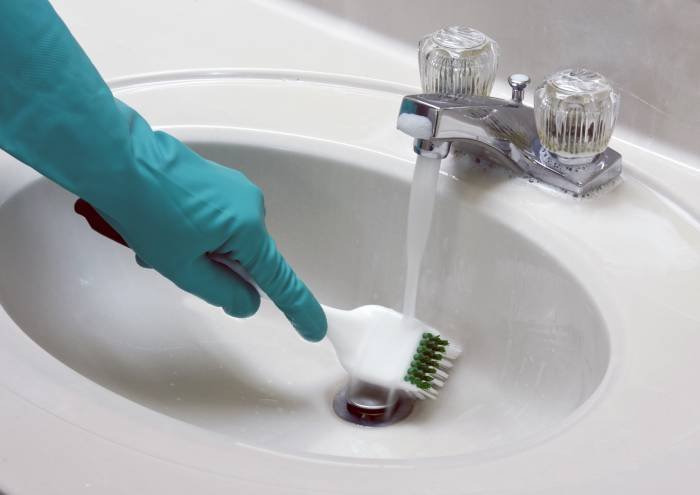
Main parts of basin click waste
Body: This is the central part of the click waste and is typically made of brass or plastic. It is responsible for securing the waste plug and connecting it to the sink’s drain.
Plug: The plug is the component that prevents water from flowing down the drain. It is usually made of rubber or plastic and has a knob or handle to open and close it.
Retainer: The retainer is the mechanism that holds the plug in place. It is typically a spring-loaded clip that sits inside the body of the click waste.
Washer: It provides a watertight seal between the click waste body and the sink’s drain hole.
O-ring: the o-ring is another seal that prevents water from leaking around the click waste body. It is usually made of rubber and fits around the base of the click waste body.
Clicker: This component allows the plug to be opened and closed with a simple push or pull of the knob or handle. It is typically a set of gears or a ratcheting mechanism connected to the plug and retainer.
Different colors/finishes of basin click waste and flip wastes
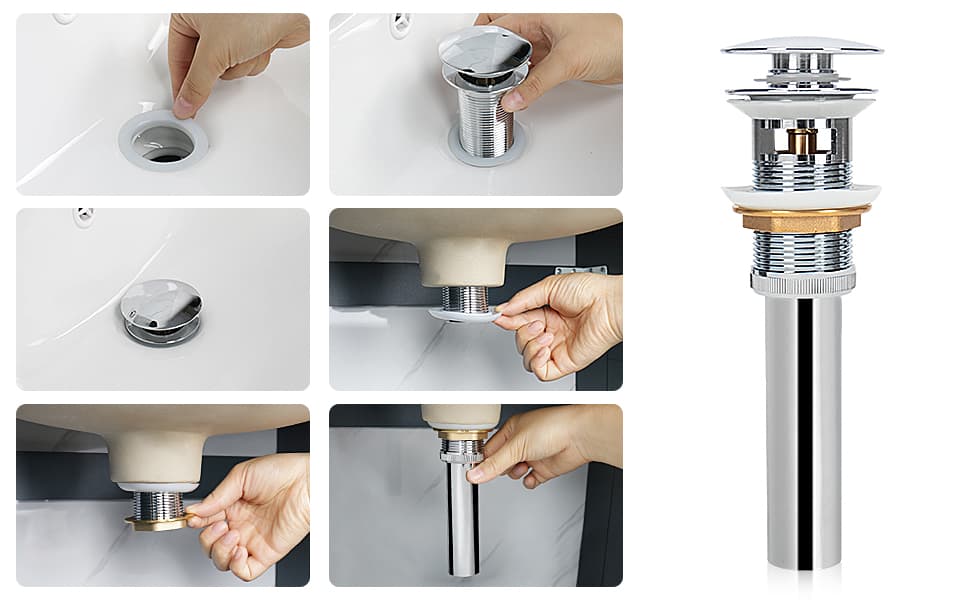
Basin click and flip waste are available in various colors and finishes to suit different bathroom decor styles and personal preferences. Some of the most popular colors and finishes for flip wastes include:
- CP: Chrome is a classic and timeless finish widespread for basin click waste and flip wastes due to its sleek and modern appearance. Yet, it is also easy to maintain and clean.
- Brushed nickel: brushed nickel is a popular alternative to chrome and has a slightly warmer and softer appearance. It is also resistant to corrosion.
- Polished brass: polished brass is a bold, striking finish ideal for traditional or vintage-inspired bathroom decor. It is also durable and resistant to corrosion.
- Matte black: matte black is a trendy and contemporary finish that adds a touch of drama to any bathroom. It is also easy to clean and keep.
- Oil-rubbed bronze: oil-rubbed bronze is a warm and rustic finish popular for flip wastes in traditional or rustic bathroom designs. It is also durable and resistant to corrosion.
Other finishes for basin click and flip waste include polished nickel, antique brass, brushed gold, and gunmetal. When choosing a finish for a basin, click waste and flip waste. It is crucial to consider the bathroom’s overall design and select a finish that complements other fixtures and accessories.

Raw material for flip waste and basin click waste
Flip wastes can be made from various raw materials, depending on the manufacturer and the desired properties of the final product. Some of the most common raw materials used to make flip wastes include:
- Brass: is a popular material for flip wastes due to its durability, corrosion resistance, and attractive appearance. It is also easy to machine and can be finished in various ways.
- Stainless steel: is a corrosion-resistant and durable material often used in high-end flip wastes. It has a sleek, modern appearance and is easy to clean and maintain.
- Plastic: this is a lightweight and affordable material commonly used in lower-end flip wastes. It is accessible to mold and can be finished in various colors and textures.
- Zinc is a strong and durable material often used in mid-range flip wastes. It can be finished in various ways and has a similar appearance to brass.
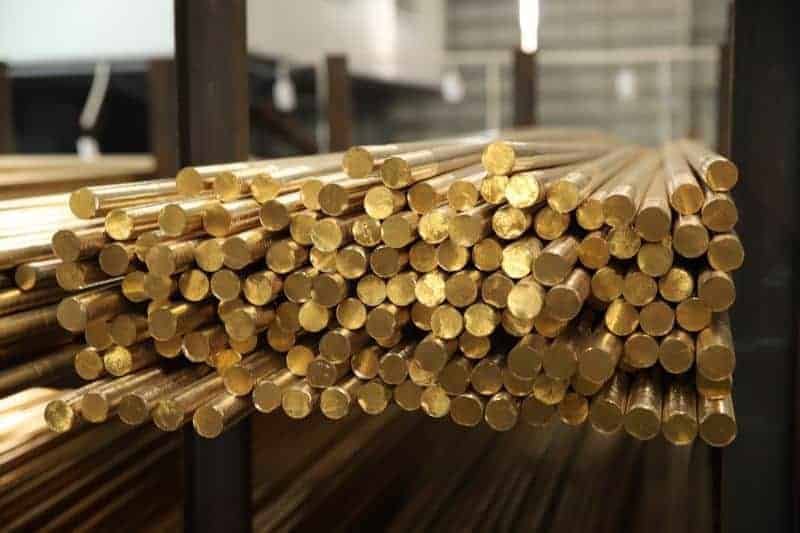
Other materials used to make flip wastes include aluminum, bronze, and copper. The choice of material will depend on factors such as the desired strength, durability, and appearance of the final product, the manufacturer’s production capabilities, and cost considerations.
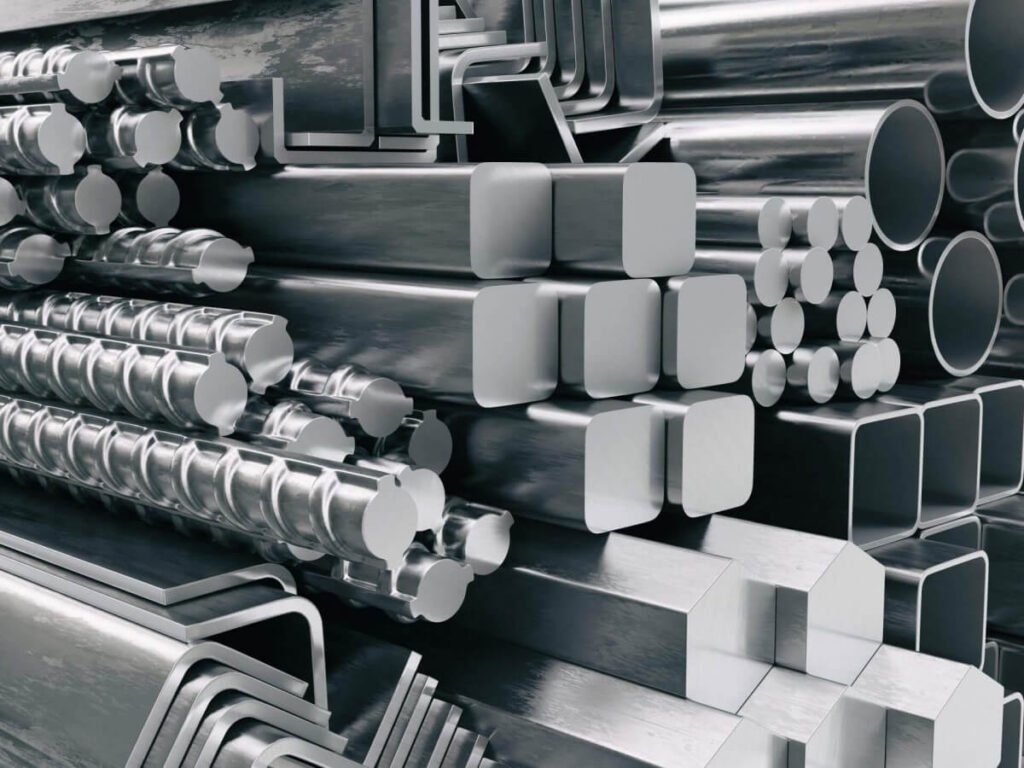
Application of basin clicks waste and flip waste.
Basin click and flip waste are both plumbing fixtures used in bathrooms to control water drainage from washbasins or sinks.
Basin click waste is typically used in washbasins or sinks where the waste hole has a standard size of 1 ¼ inches. It is operated by simply pressing down on the waste plug to close the drain and pressing again to open it. Basin click waste is common in residential bathrooms, hotels, and other commercial settings.
Flip waste is a drain plug commonly used in modern bathroom sink designs. It is typically used in washbasins or sinks where the waste hole is larger than the standard 1 ¼ inches. It is operated by flipping a lever or handle to open or close the drain. Flip wastes are available in different finishes and styles to match the bathroom sink’s or washbasin’s design. They are commonly found in modern residential and commercial bathrooms.
What is the size of the flip waste?
The size of a flip waste can vary depending on the manufacturer and the specific model. Typically, flip wastes are available in standard sizes of 1 1/4 inches or 1 1/2 inches in diameter, corresponding to the standard sizes of waste holes in most basins or sinks.
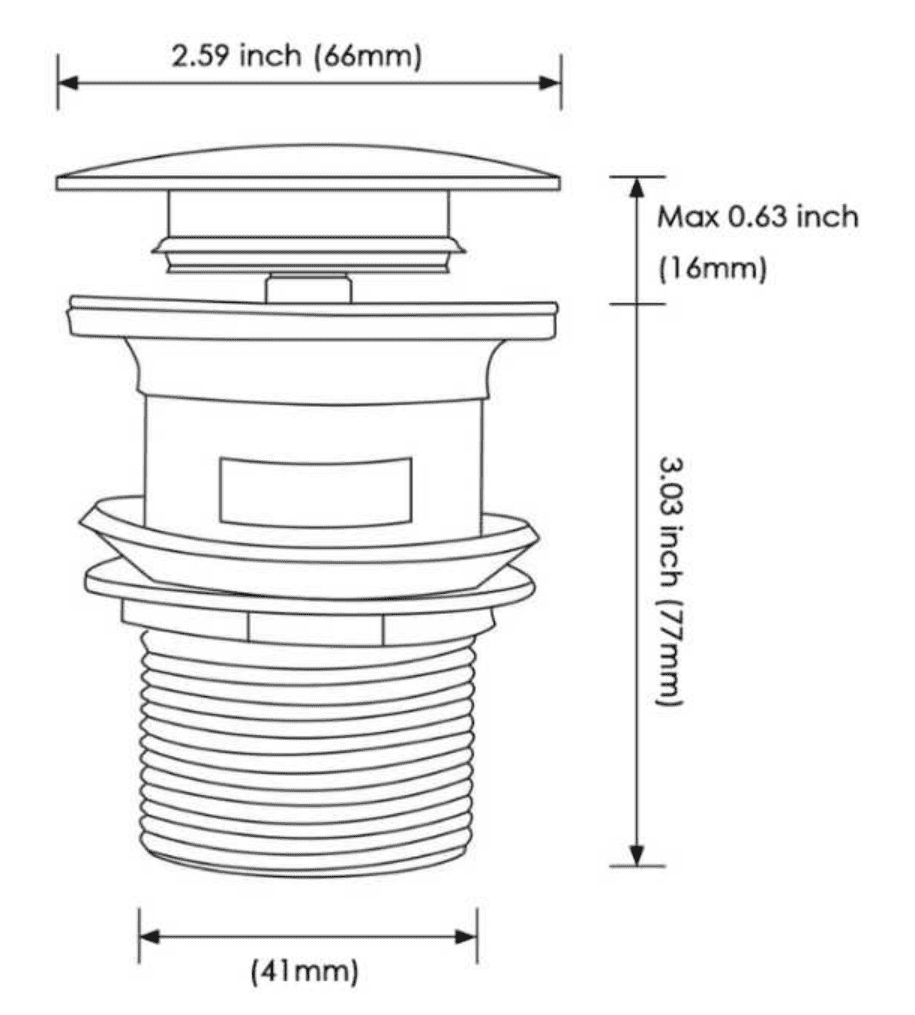
FAQs about basin click waste and flip waste.
Here are some frequently asked questions about basin click waste and flip waste:
- What size of basin or sink do i need for a basin? Click waste or flip waste to fit?
- Basin click wastes and flip wastes come in different sizes to fit various sizes of basins or sinks. Check the manufacturer’s specifications to ensure you get the right size waste for your basin or sink.
- Can I replace my old basin waste with flip or basin click waste?
- Yes, you can replace your old basin waste with a flip or basin click waste if you choose the correct size and type of waste for your basin or sink.
How to install the basin click waste?
Installing a basin click waste involves a few steps. Here’s a general guide on how to install a basin click waste:
Materials needed:
- Basin click waste kit
- Adjustable wrench
- Plumber’s putty (optional)
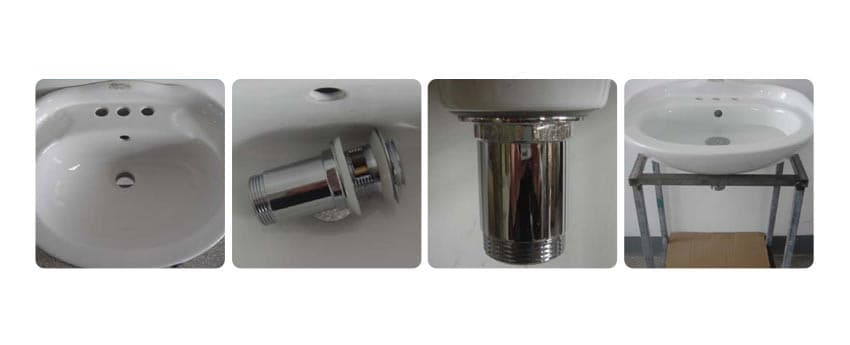
Steps:
- Remove the old waste system (if necessary). This may involve unscrewing the old click waste from the sink or basin.
- Clean the area around the sink or basin hole where the click waste will be installed. This will ensure a proper seal between the waste system and the sink or basin.
- Apply the plumber’s putty (if desired) to the underside of the flange on the click waste. This will help create a tight seal between the waste system and the sink or basin.
- Insert the click waste into the sink or basin hole, ensuring it is centered and level.
- Install the rubber washer and nut underneath the sink or basin and tighten securely with an adjustable wrench.
- Attach the overflow pipe (if applicable) to the click waste.
- Install the plug and test for leaks by filling the sink or basin with water.
- If there are no leaks, you’re done! If there are leaks, try tightening the components or replacing worn or damaged parts.

- Are flip wastes or basin click wastes more durable?
- Both types of waste are typically made of durable materials such as brass, stainless steel, or plastic, so they should last for many years with proper care and maintenance.
- Can i install a basin click waste or flip waste myself, or do I need to hire a plumber?
- Installing a basin click waste or flip waste is a relatively simple process that anyone can do with basic plumbing skills and tools. However, suppose you are unsure how to do it or encounter problems during installation. In that case, it is always best to consult a professional plumber.
- Can i choose the color or finish of my basin and click waste or flip waste?
- Yes, both types of waste come in various colors and finishes to match your bathroom decor or personal preferences. Check with the manufacturer or retailer to see what options are available.

